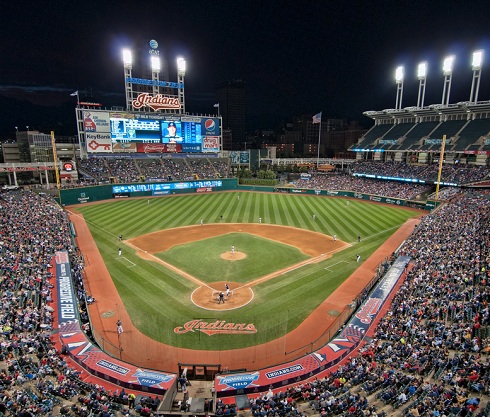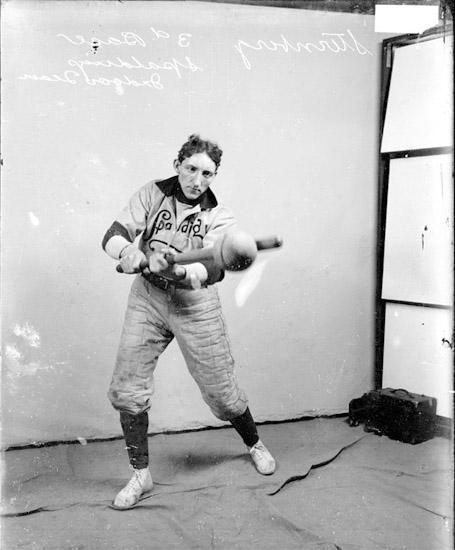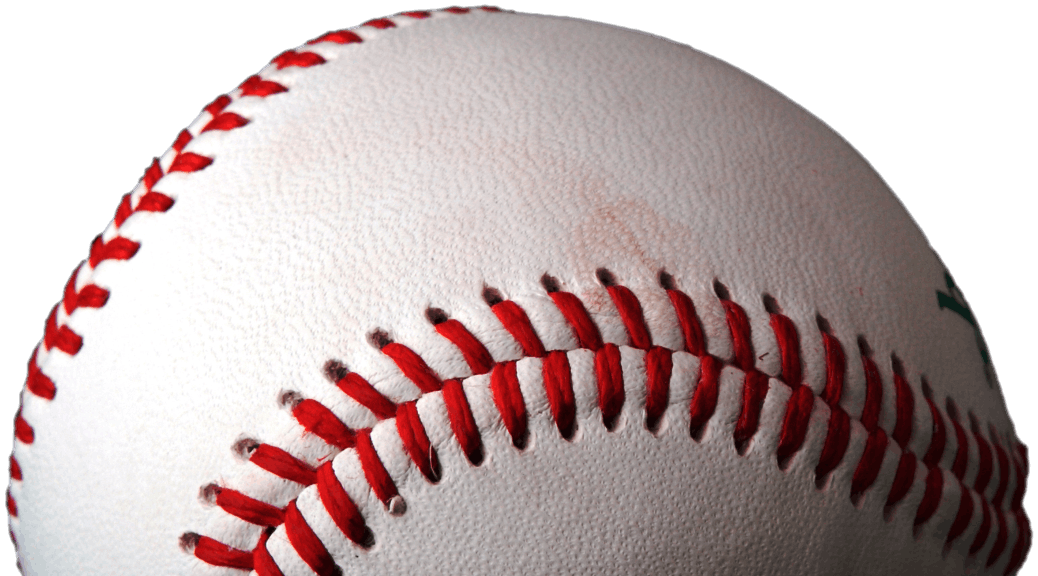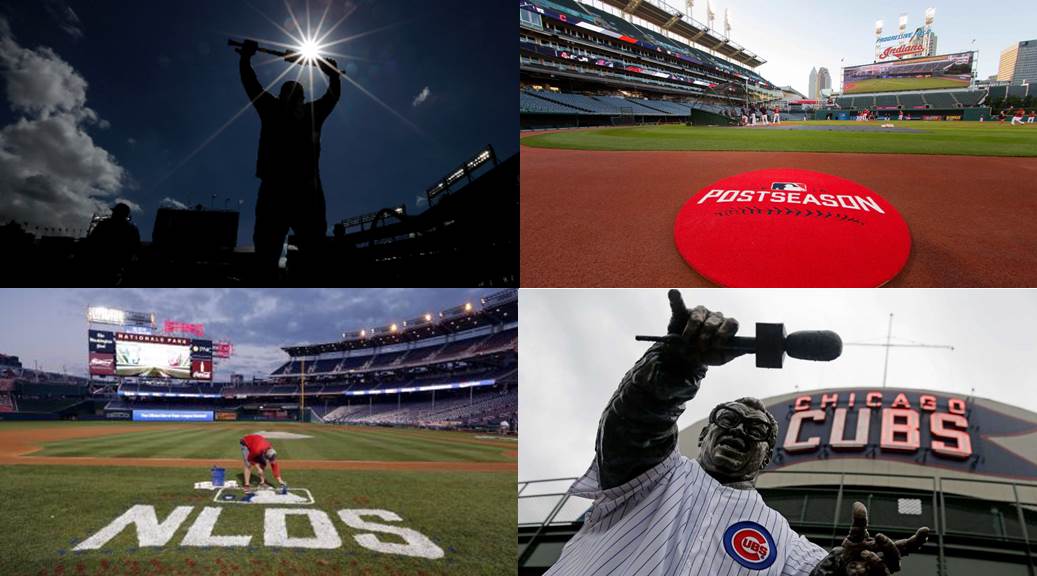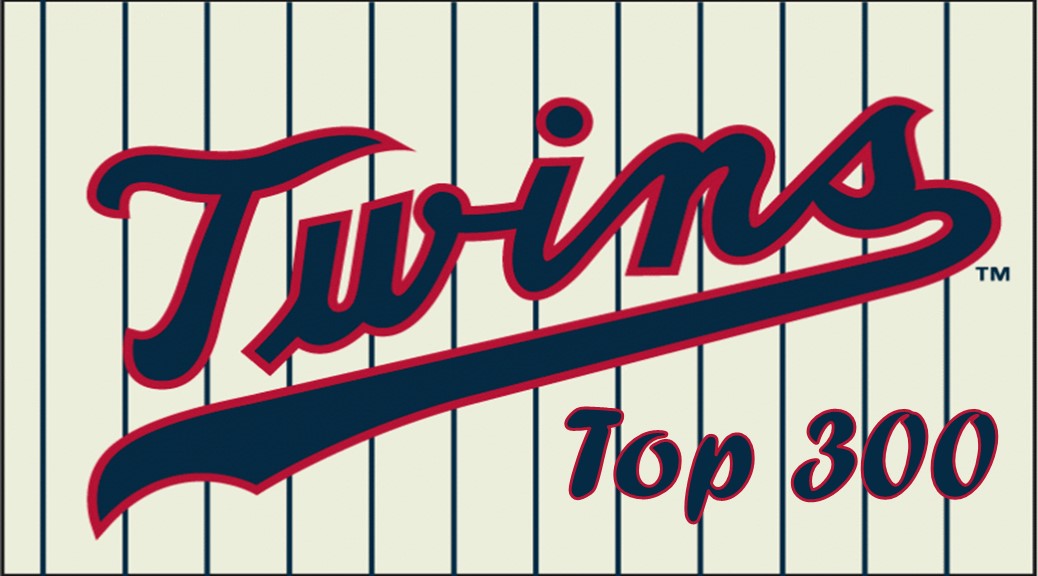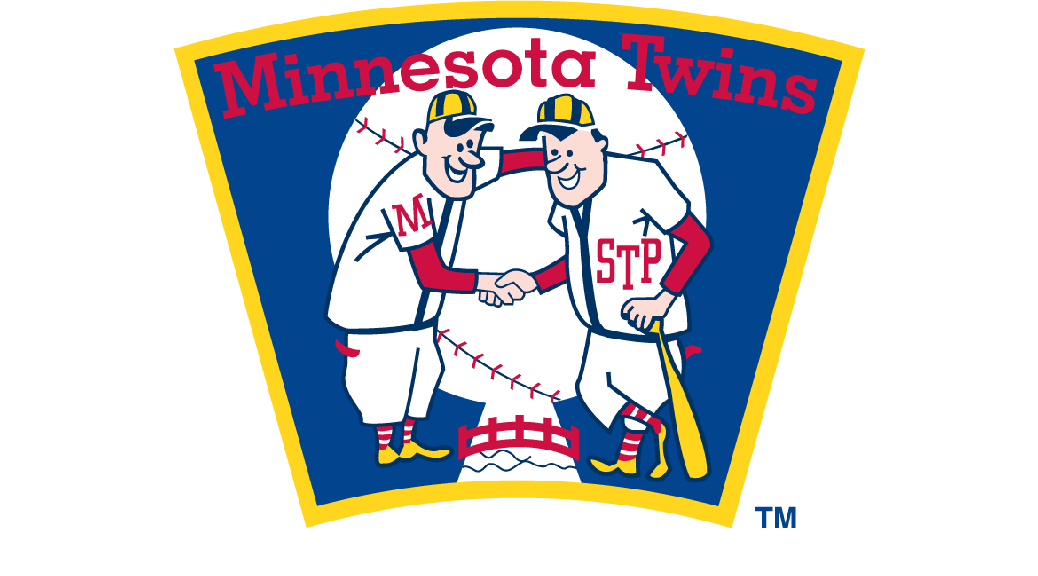Toronto at Cleveland!
Category Archives: MLB
2016 Division Series, Day 6
Washington at LA Dodgers 4pm (FS1)
Chicago at San Fran (FS1)
2016 Division Series, Day 5
Nationals at Dodgers, Gonzalez v Maeda, in progress.
Spiders at Red Stockings, Tomlin v Buchholz, 5:00 p.m.
Cubs at Giants, Arrieta v Bumgarner, 8:30 p.m.
2016 Division Series Day 2
Blue Jays at Rangers, Happ v Darvish, in progress.
Red Sox at Clevelanders, Price v Kluber, 3:30 p.m.
Dodgers at Nationals, Kershaw v Scherzer, 4:30 p.m.
Giants at Cubs, Cueto v Lester, 8:00 p.m.
2016 AL Division Series Games 1
Blue Jays at Rangers, in progress, Cole Hamels v Marco Estrada
Red Sox at Clevelanders, 7:00 p.m., Rick Porcello v Trevor Bauer
Top 300 Twins of all Time: One Man’s opinion
It is year 5 of putting my pet project on the WGOM site, SBG put it on his old site a few years before this. Despite the worst record in 56 years of Minnesota Twins baseball, a few players did move up the rankings. Joe seems stuck for eternity between Oliva and Hrbek. He still needs one more decent year to crack the top4, but he's running out of time. Dozier rockets into the top30 on the strength of his outstanding 2016 season. Plouffe jumps 13 spots to 83. Sano jumps 39 spots to 123. Suzuki jumps 31 spots to #133 just ahead of his almost statistical equal (as a Twin) Terry Steinbach. All Star Eduardo Nunez goes from unranked last year all the way to 145. Ervin jumps over 100 spots to #156. Besides Nunez, other newcomers this year (that all are in the 250-300 range) are Grossman, Kepler, Buxton, Pressley, Polanco, Vargas
Staying put (or even falling backward) are Perkins, Hughes, Escobar, Danny Santana, Rosario, Gibson, Fien, Arcia, Milone
I stole most of the idea from when Gleeman started his top40 list years ago (book coming next year?) The below quote is his, and the rest is an excerpt from a book I put together at the 50 year mark. I’ve updated the list and stats through 2016.
“The rankings only include time spent playing for the Minnesota Twins. In other words, David Ortiz doesn’t get credit for turning into one of the best players in baseball after joining the Red Sox and Paul Molitor doesn’t get credit for being one of the best players in baseball for the Brewers and Blue Jays. The Twins began playing on April 11, 1961, and that’s when these rankings start as well.”
I used a variety of factors, including longevity and peak value. Longevity included how many years the player was a Twin as well as how many plate appearances or innings pitched that player had in those years. For peak value, I looked at their stats, honors, and awards in their best seasons, as well as how they compared to their teammates. Did they lead their team in OPS or home runs or ERA for starters or WPA? If so, that got some bonus points. I factored in postseason heroics, awards (gold gloves, silver sluggers, MVPs, Cy Youngs), statistical achievements (batting titles, home run leaders, ERA champs, etc), and honors (all star appearances), and I looked at team success as well. If you were the #1 starter on a division winning champ, that gave you more points than the #1 starter on a cellar dweller. I looked at some of the advanced stats like WPA, WAR (as calculated by fan graphs and baseball-reference.com), WARP (as calculated by Baseball Prospectus), and Win Shares (as calculated by Bill James). For hitters, I also looked at OPS and the old school triple crown statistics like batting average, home runs, stolen bases, and RBI (and not only where you finished within the AL in any given year, but where you appear on the top25 lists amongst all Twins in the last 50 years). For pitchers I looked at strikeouts, innings pitched, win/loss percentage, ERA as well as ERA+). If there was a metric that was used for all 54 years of Twins history, I tried to incorporate it. I tended to give more credit to guys who were starters instead of part time/platoon players, more credit to position players over pitchers (just slightly, but probably unfairly) and starters over relievers (and closers over middle relievers). There’s no formula to my magic, just looking at a lot of factors and in the end going with the gut in all tie-breakers. Up in the top10 I’m looking at All star appearances, Cy Young and MVP votes, batting average or ERA titles or top10 finishes, etc, and placement in the top25 hitting and pitching lists in Twins history as well. In the middle 100s, it’s more about who started a few more years or had 2 good seasons rather than 1 with possibly an occasional all-star berth or top10 finish in SB or strikeouts. Once you’re in the latter half of the 200s there are none of those on anyone’s resume, so its basically just looking at peak season in OPS+ or ERA+, WAR, Win Shares, and who started the most years, had the most at bats, or pitched the most innings. What the player did as a coach, manager, or broadcaster is not taken into consideration for this list, so Billy Martin, Tom Kelly or Billy Gardner weren’t able to make the top 300 since they were poor players and Frank Quilici didn’t improve his status due to his managing career.
Continue reading Top 300 Twins of all Time: One Man’s opinion
Your 2017 Twins Are…
Forking off the discussion to here...
Here's my barely half baked attempt at a 2017 lineup.
Listing it out...
Catcher: ???
First: Mauer.
Second: Dozier.
Third: Sano. UZR had him as a plus fielder there this year and last.
Shortstop: Polanco? UZR did not like his fielding at short.
Right: Kepler.
Center: Buxton.
Left: ???
Suzuki's option did not vest so I think that makes him a free agent. That leaves Murphy as the catcher to start the season. Grossman is the obvious one to put in left but, well, gross. Maybe Rosario instead? Scouts never liked Polanco's fielding at short and the metrics agree with them. Escobar would then be the shortstop but he needs to bring back the 2015 version.
Top Twins Tater Tattooists
In honor of Brian Dozier joining Harmon Killebrew in the 40 homer club, here are the single season franchise leaders in HR by position, presented three ways because "most homers by a [position player] is a very squishy conversation.
50% of games at primary position
| Pos | Player | HR | Age | Year |
|---|---|---|---|---|
| C | Mauer | 28 | 26 | 2009 |
| 1b | Killebrew | 46 | 25 | 1961 |
| 2b | Dozier | 42 | 29 | 2016 |
| 3b | Killebrew | 49 | 33 | 1969 |
| SS | Smalley | 24 | 26 | 1979 |
| LF | Killebrew | 49 | 28 | 1964 |
| CF | Hall | 33 | 25 | 1965 |
| RF | Allison | 35 | 28 | 1963 |
| DH | Davis | 29 | 31 | 1991 |
| P | Kaat | 3 | 25 | 1964 |
100% of games at primary position
| Pos | Player | HR | Age | Year |
|---|---|---|---|---|
| C | Battey | 26 | 28 | 1963 |
| 1b | Killebrew | 26 | 36 | 1972 |
| 2b | Dozier | 28 | 28 | 2015 |
| 3b | Gaetti | 34 | 27 | 1986 |
| SS | Versalles | 20 | 24 | 1964 |
| LF | Killebrew | 49 | 28 | 1964 |
| CF | Puckett | 31 | 26 | 1986 |
| RF | Brunansky | 27 | 24 | 1985 |
| DH | Thome | 25 | 39 | 2010 |
| P | Kaat | 3 | 25 | 1964 |
as X position
| Pos | Player | HR | G | Age | Year |
|---|---|---|---|---|---|
| C | Battey | 26 | 145 | 28 | 1963 |
| 1b | Killebrew | 44 | 160 | 31 | 1967 |
| 2b | Dozier | 40 | 135 | 29 | 2016 |
| 3b | Killebrew | 42 | 150 | 23 | 1959 |
| SS | Smalley | 23 | 161 | 26 | 1979 |
| LF | Killebrew | 49 | 157 | 28 | 1964 |
| CF | Puckett | 31 | 158 | 26 | 1986 |
| RF | Allison | 34 | 140 | 28 | 1963 |
| DH | Davis | 29 | 150 | 31 | 1991 |
| PH | Mincher | 4 | 46 | 26 | 1964 |
| PH | Lecroy | 4 | 19 | 28 | 2004 |
How Many Brians Dozier?
On a recent episode of Effectively Wild, the hosts were presented with the following scenario:
Let's say you run a team filled entirely with league-average players, and you're given the unique & magical option of replacing as many of those players as you like with Barry Bondses. How many Barrys do you take, where do they play, where do you hit them in the order, and how many games does the team win?
The hosts decided to answer the question three times: once for 2016 Barry Bonds, once for 1993 Barry Bonds, and once more for 2004 Barry Bonds. The hosts assumed that every starting position player & member of the rotation were roughly 2-win players, every bench player was slightly better than replacement level, and every reliever a 1-win player. Finally, they used the lineup analysis tool at Baseball Musings to generate a rough idea of how many runs their Bonds-fueled offense would score per game.
Let's substitute "Barry Bondses" with "Brians Dozier" and contemplate the scenario twice: once with full 2016 Brian Dozier, and once with post-17 June 2016 Brian Dozier. What are our answers?
On the full season, Dozier has posed a .349 OBP and .580 SLG. His value according to your preferred metric is 6.0 rWAR, 5.7 fWAR, or 4.7 WARP. Since 17 June, Dozier has a .369 OBP and .746 SLG. A league-average hitter across MLB would have a .322 OBP and .419 SLG, which is just about what Kurt Suzuki has managed this year (.319/.421). A lineup of store-brand Kurts Suzuki would score 4.510 runs per game.
Using the 1989-2002 model of the lineup tool, a lineup of eight full season Brians Dozier, plus a store brand Suzuki at catcher, would score 6.375 runs per game. A lineup of eight post-17 June Brians Dozier plus IGA Suzuki would score 8.177 runs per game.
Obviously you deploy a Dozier at second & shortstop, where he has significant experience, at DH, and at 1b (I mean, Ryan Howard plays there...). Dozier's roughly an average defender at second (Fangraphs has his UZR/150 at -0.9 over 5144 innings). At short he's a bit worse: -5.0 over 732.1 innings. But then it starts getting tricky.
Dozier has exactly 20 games at 3b in the pro level, none since he played 6 innings at third for New Britain in 2011. Reaction time is the big unknown and Dozier's limited range at shortstop becomes less important. Michael Cuddyer had a -8.1 UZR/150 at 2b over 532.1 innings and was -10.2 at 3b. Assuming Dozier's arm is weaker than Cuddyer's, but that he gets to a few more balls than his former teammate, we could say Dozier's probably in the neighborhood of a -3.5 defender at third.
Dozier has never played outfield in pro ball. Cuddyer was -8.1 over 7546.2 innings in right field. Cuddyer clearly made a deal with the SSS devil to get his 34.4 UZR/150 in 36 blessedly uneventful innings in center. Dozier is younger and more mobile than Cuddyer was, a plus for potential deployment in center, but his arm becomes more of a factor in the outfield. Frankly, your guess is as good as mine.
Since Dozier is a middle infielder you can relieve yourself of the burden of carrying a Denny Hocking on the roster to cover up-the-middle positions on the bench, but you probably need a backup catcher with Chris Herrmann's resume. Whether you carry eleven or twelve pitchers probably depends on your feelings about a bunch of 1-win relievers. Of course, you could elect to have a six-man rotation to give yourself one more 2-win starter.
So, how many Brians Dozier do you take – full season and post-17 June – to make up your team? Where do you play them?
Bull (Market) Dozier?
Brian Dozier is having himself one heck of a season. In the first 62 games (though mid-June), Dozier was OPSing below .700: .227/.325/.369, with only 7 HR & 12 doubles and a .250 BABIP. That put him on pace for this kind of season (pro-rated over 162 games):
| G | PA | AB | H | 2b | 3b | HR | BB | IBB | SO | HBP | BA | OBP | SLG | OPS | BABIP |
|---|---|---|---|---|---|---|---|---|---|---|---|---|---|---|---|
| 162 | 703 | 609 | 139 | 32 | 0 | 19 | 74 | 3 | 113 | 16 | .227 | .325 | .369 | .694 | .250 |
Here's what he's done since then:
| G | PA | AB | H | 2b | 3b | HR | BB | IBB | SO | HBP | BA | OBP | SLG | OPS | BABIP |
|---|---|---|---|---|---|---|---|---|---|---|---|---|---|---|---|
| 71 | 322 | 291 | 93 | 20 | 5 | 31 | 25 | 3 | 63 | 1 | .320 | .371 | .742 | 1.113 | .308 |
| 162 | 735 | 665 | 213 | 46 | 12 | 71 | 58 | 7 | 144 | 3 | .320 | .371 | .742 | 1.113 | .308 |
Take another look at that prorated home run pace. Since mid-June Dozier's been slugging the ball the way Bret Boone could only have dreamed.
But has he been hitting cheapies? According to Home Run Tracker, Dozier's average true distance this season is 397.7 feet, which is just below the AL average (399.2 ft) and his average speed off the bat is 103.7 mph, just a tick below average (103.9 mph). Only two of his homers have been hit to the right of dead-center (off Cesar Ramos in Arlington & Carlos Rodon in Chicago). Home Run Tracker rates 8 of Dozier's homers as "No Doubt" clouts, which ties him with the following players: M. Machado, E. Longoria, B. Harper, M. Trout, D. Ortiz, E. Gattis, M. Cabrera, C. Gonzalez, A. Duvall. Some notable names with No Doubt hits that don't speak as loud: J. Donaldson, M. Sano, A. Rizzo, P. Goldschmidt, K. Morales, P. Alvarez, J. Upton, A. Beltre. Dozier is tied with Adrian Beltre for 5th in "Just Enough" homers, trailing both Jay Bruce & Robinson Cano (and one ahead of his playfully mephitic fellow keystone slugger Rougned Odor). Draw what conclusions you will, but it seems that Dozier's been neither wildly lucky or Thor-like.
Dozier's been just about as good on the road as he's been in Minneapolis:
| Split | G | PA | AB | H | 2b | 3b | HR | BB | IBB | SO | HBP | BA | OBP | SLG | OPS | BABIP |
|---|---|---|---|---|---|---|---|---|---|---|---|---|---|---|---|---|
| Home | 68 | 300 | 272 | 78 | 18 | 3 | 19 | 22 | 2 | 51 | 3 | .287 | .343 | .585 | .928 | .288 |
| Away | 65 | 291 | 252 | 68 | 14 | 2 | 19 | 31 | 2 | 55 | 4 | .270 | .356 | .567 | .924 | .272 |
Fangraphs' David Laurila wrote up Dozier's insight on his approach just last month (August 5th). Dozier had homered the night before (#22), "putting him on pace to match last year's career-high total of 28" as Laurila noted. The article's worth your time if you haven't read it already. I won't recap any of it here, other than to say I hope Dozier's philosophy is respected by the coaching staff & front office, and that he shares it more widely in the clubhouse. Last week Fangraphs' Scott Strandberg followed up on Laurila's interview with some analysis of Dozier's new swing mechanics. In a piece published at Fangraphs today, August Fagerstrom observes that Dozier currently is second on MLB leaderboards for two metrics: home runs (behind Mark Trumbo) and ISO (behind David Ortiz). What Dozier has done is truly historic. Fagerstrom: "[Dozier's] .298 ISO is the highest unadjusted figure in the expansion era (1961-present) for a second baseman and the highest by any second baseman not named Rogers Hornsby in baseball history (emphasis mine). Adjusted, Dozier is 6th since 1961, behind Joe Morgan ('76), Davey Johnson ('73), Bobby Grich ('81), Ryne Sandberg ('90), and Grich again ('79). A truly impressive list no matter which way you make it
That list also suggests something else: that Dozier's best days as a player may well be happening right now. Will the Brian Dozier we know right now – or, heck, even the Brian Dozier of 2014 & 2015 – be a solid contributor on the next great Twins team?
Dozier will be in his age-30 season next year. We all are familiar with the aging characteristics of bat-first second basemen, and if you figure Dozier's defense is about league average (as most metrics suggest), then the question begins to be shaped by forces outside of Dozier's control. Will the next great Twins team come before Dozier is a significant liability in the infield? Jeff Kent & Dan Uggla are proof that a team can trot out a mediocre defender at second base for a good long time if he averages 25+ bombs a season. If Dozier can keep that up, the answer two both questions is probably "Yes."
To finally get to the question raised in the title of this post: should whomever the Twins name as their new GM aggressively shop Dozier this winter?
Last season the Twins signed Dozier to a deal that has been very club-friendly to date: 4 years/$20 million. After this season Dozier is due $6 million in 2017, followed by $9 million in 2018. As the value of a win continues to rise (currently somewhere around $6 million $8 million per win), Dozier promises to offer significant value as long as he can stay on the field and manage at least the 2.4 rWAR/3.3fWAR he posted in 2015. By keeping him, the Twins have one major, veteran bat in their lineup for two more seasons. (With, I might add, a great approach to hitting, whether the front office appreciates it or not).
On the other hand, however, Dozier's contract and production could be extremely attractive to clubs looking to contend in 2017. The most appealing free agent second basemen this winter are probably Neil Walker, Chase Utley, and Kelly Johnson.
The major wrinkle in pursuing any trade is figuring out what teams might be looking to upgrade at the keystone next year. Of the obvious contenders, the Dodgers & Cardinals both make plenty of sense, but other likely first-league clubs are pretty well set at second: Cubs (Baez/Zobrist), Astros (Altuve), Rangers (Odor), Red Sox (Petunia), Blue Jays (Travis), Pirates (Harrison), Marlins (Gordon), and so on. Any non-Dodgers/Cardinals trade would probably need to happen with a team that is out this year but likes its chances next season.
So the question is, if you're the Twins' new GM, what do you do?

